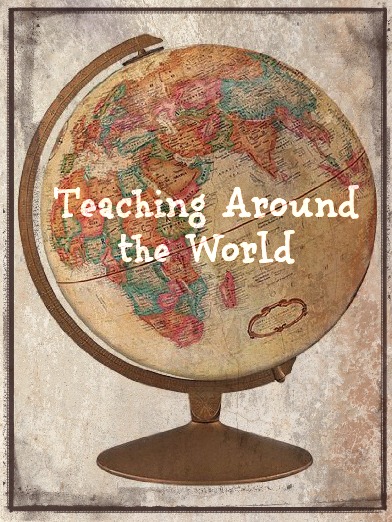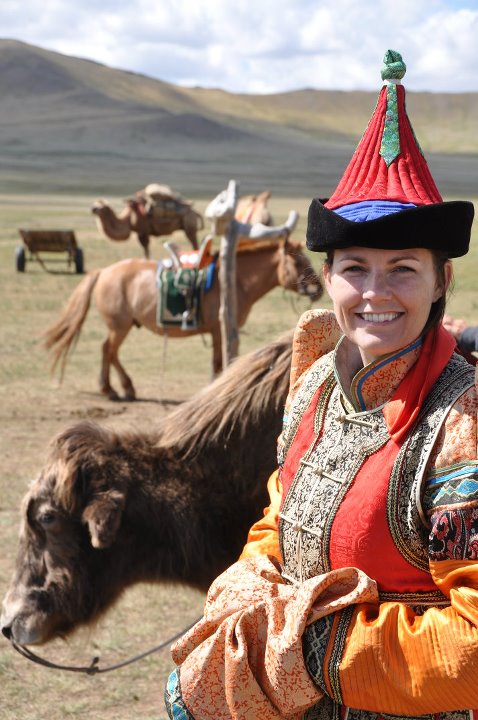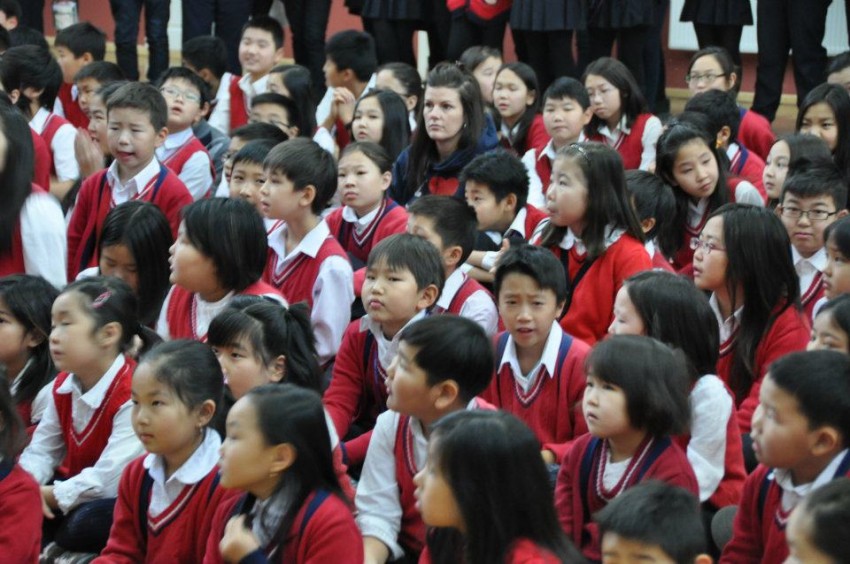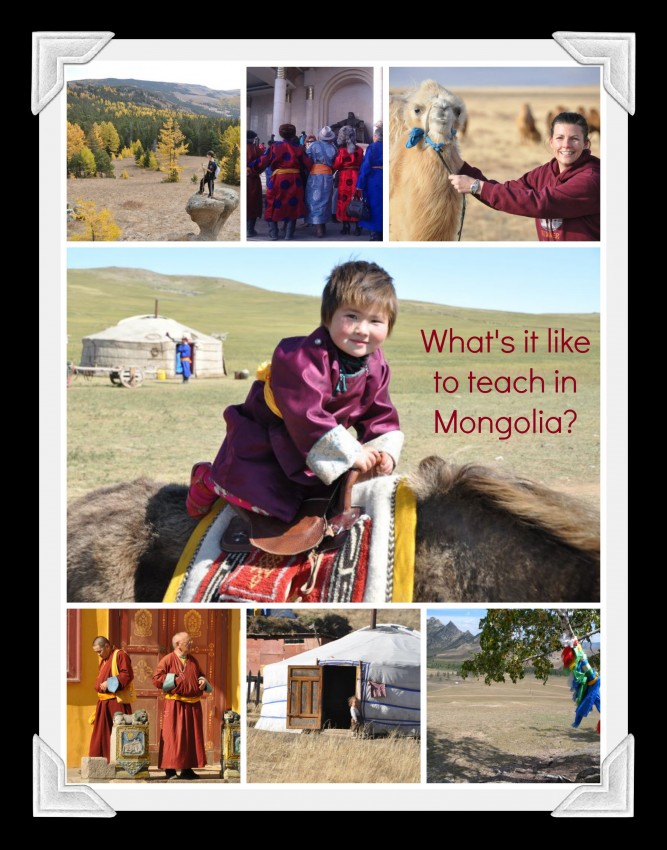
I love to learn about schools and lifestyles in other parts of the world, so I decided to reach out to teachers in interesting locations and interview them about their experiences. This post is the second in a new occasional post series I’m calling Teaching Around the World. I hope you enjoy reading about these teachers’ experiences as much as I have!
Today, we have husband and wife Ryan & Pepper McFarland with us to talk about teaching in Mongolia. Pepper has been teaching for 11 years. Her initial teaching certification was in Washington State but has now taught in Florida, Arizona, Alaska, China and Mongolia. She likes puzzles, reading, travel and outdoor activities. Ryan recently left a career in Parks and Recreation to become an international teacher. He has a blog at Zieak.com where he writes about his ever-changing interests. They have a 13 year old son and two cats.
How did you find yourself teaching in Mongolia?
There is a bit of a back story to how we ended up in Mongolia. When we met, Pepper was working at an international school in Shanghai. Ryan was living and working in a small town on an island in Alaska. He worked closely with the school district – managing the community use of shared recreational facilities with the school. When we married, Pepper moved to Alaska and we crossed our fingers about her getting a job at the school there. When it looked like substitute teaching was the best she would get (for a second year), we decided to look at the possibility of working out of the country.
We used TIE Online and Search Associates to find the positions we applied for. We sent inquiries to over 150 schools but with Ryan’s lack of teaching experience or credentials coupled with his lack of experience living overseas, we had a tough time even getting interviews. Skype is used for interviews and there are usually a few that happen before a contract is offered. The benefits are far better if you get a job while in the US or Canada (as a “foreign hire”) and then take a position overseas as opposed to being in the country you’re applying to (a “local hire”).
Another service that teachers use is International School Services, which Pepper used the first time around to get her job in Shanghai, China. For both Search and ISS you should think of applying in October or earlier as schools overseas start their hiring process very early. It is also important to note that many of the better schools hire at job fairs either at ISS, Search, or other independent services. We did not go to a job fair therefore we got our Mongolia posting much later in the school year.
What is like to live in Mongolia, in your experience?
Mongolia is amazing in many ways. There are some really awful things like the terrible air pollution in the winter. Many people live in traditional yurts (called a ger here) and in the winter when the temperature can get down to -40, people burn coal or even parts of tires to heat their ger. Of course, the temperature getting down to -40 is easily a drawback too! Traffic can be incredibly bad at times. A morning commute to work for us is about 10 minutes. The return can be over an hour at times. This automobile congestion contributes to the air pollution as well.
There are so many positives though. Mongolians are overwhelmingly Buddhist and there are great monasteries in and around Ulaanbaatar. Elderly people still walk around in traditional outfits. Almost every day is sunny. There are fantastic cultural shows, ballet, and operas that happen in bold soviet-era buildings. The economy is hurtling along with new construction everywhere.
Everyday experiences have a strange mix of frustration and wonder. Some things are exponentially more difficult than in the US. You meet people from all over the world, travelers, businessmen, and locals that want to know more about the US. The social opportunities with other expatriates can be quite fun. There are social nights, hiking and running groups, trivia nights at pubs, gallery openings and other events catering to foreigners. Our school plans some social activities for staff and their families too.
We have spent our spring and fall breaks (yes, we get a week off in the fall too!) to see more of Mongolia. Winter break has been spent escaping the cold with trips to southeast Asia. Last summer, we headed home via the Trans Siberian Railroad riding all the way to Moscow. The opportunities for travel have been incredible. Trips around Mongolia range from camels in the Gobi Desert, Kazakh people in the west, Siberian architecture and vast forests in the north, the reindeer people of the northwest, and traditional Mongolian gers, horse riding, and handicrafts near Ulaanbaatar.
We have a cleaner that comes to our apartment once a week. That costs us just over $20. We also have a driver that usually takes us to work and brings us home. It costs us $4.25 each way – about the same as a taxi. He sometimes shuttles us around on the weekend or drives us out into the countryside. Having fairly cheap labor allows expats in many countries to hire drivers and cleaners. It seems elitist, but the positions pay a reasonable wage (they set their own rates) and contribute to the local economy. Our driver has become a good friend, teaching us some Mongolian vocabulary and customs, running the occasional errand, and even coming over for Thanksgiving dinner.

What are the biggest differences between schools where you live and American schools?
There are a number of differences between our current school and American public schools. Our school is privately owned, which changes quite a few things! There is tuition, uniforms for students, and the ever-important financial bottom line. There is no budget that we get to see. Sometimes resources are scarce and sometimes it is flooding with anything you could possibly need. Our student body is composed primarily of Mongolians. Most of the students come from families of business owners or politicians. So they may come from wealthy or influential families (we have both taught sons of the Mongolian president) but many of them have poor English skills.
On the other hand, many international schools are non-profit and host a wider range of nationalities in their student bodies. In general, we have found that students in international schools seem to be better behaved than those in American public schools. Lower grades will have a Mongolian staff member in each class to help with translations, communication with parents, grading or other work that teachers need help with.
Tell us the basics about your job. How many students do you have? How long is your school day? What subjects do you teach?
Our school has over 600 students from Pre-K through 12th grade. Classes start at 8:25 with a homeroom. For middle and high school there are 5 periods per day that are an hour long. There is a morning break of 20 minutes and an hour long lunch period. School completes at 3:20. On Mondays and Wednesday there are after school activities that run until 4:15. These range from cooking club to middle school sports teams.
Ryan: I teach high school and some middle school PE classes. I have one seventh grade class, two eighth, one ninth, two tenth, and one class of 11/12th grade students. Class sizes range from 13 to 24 students. I am the Athletic Director so plan the sports for the middle and high school teams. I also coach boys varsity volleyball in the fall and girls varsity soccer in the spring.
Pepper: Last year I taught 5th grade, which was a first for me. I am certified 4-12, but had never taught lower than middle school level. I had 22 students in my classroom at the beginning of the year, but ended with 19. The 5th grade was quite large, we therefore had 3 classes where the other elementary grades had only 2 sections. This year I am teaching 6th grade humanities, which has one period of Language Arts a day and 3 periods of social studies a week. I have an average of 17 students in each class. We have an ESL teacher that supports me, in order to help our lower ESL kids.
What is a typical day like in your classroom? Tell us about your daily schedule or routines.
We have a driver that picks us up in the morning at 7:30. Our lunch periods are spent with students in Pepper’s classroom or in the fitness room or gym where Ryan’s office is. Pepper’s class load is heavy and she does not have planning periods every day. Ryan’s class load is lighter so he can work on the Athletic Director portions of his job. We usually head home at about 5 if neither of us are coaching and closer to 6 if we do have practice that day.
We’re a bit of an exception at our school. Since we have a son, we live off campus. Most of the other teachers that are single or do not have children live in apartments right on the campus. Those teachers are able to go home during their lunch or head home at 4:15. Of course, many of them stay later or pop in to their classrooms during the weekend.
What’s the best part about your teaching experience in Mongolia?
Well, the best thing is probably the salary and compensation package that is made at most international schools. Our income is not taxable by the IRS (there are limitations to how long you can be in the US and how much you make though). Our school pays for our housing and utilities. Our son attends the school without having to pay tuition. And they pay for our visas, some shipping, and our flights. These come with some drawbacks such as no retirement savings and fairly poor medical plans and facilities. But this is just our school as other schools have different benefits packages.
Not as easy to measure but just as important, we truly enjoy knowing that we’re educating the next generation of leaders in Mongolia. We are actively breaking down gender barriers, instilling an interest in environmental responsibility, and opening their minds to the larger world while still encouraging national pride. Seeing some students drastically improve their English over the past year and a half has been very rewarding.

What’s the toughest part?
At the school, the most difficult part can be meeting student needs. Because of the variable English skills, some classes have three different levels which requires much more preparation for tests, lessons, and certainly more effort in the classroom. Unfortunately, Mongolian public schools do not have the capability to work with students with disabilities. As a private school, our institution is also not set up to accommodate the needs of these students. Seeing those special needs going unmet is very difficult. Finally, some students come from such well-off families that they know they don’t really ever need to work. Motivating them can be quite challenging. However, in general we have a student population that is a real joy to teach!
What advice would you give teachers who would like to teach in Mongolia? Are the school systems looking to hire teachers internationally?
In the last 20 years, Mongolia has experienced a rapid shift to democracy and capitalism. Mongolian public schools now teach English instead of Russian. To meet the demand for an “international school” education new schools have been opening regularly. At the beginning of this school year a new school opened using the British system. Our school will be opening a new elementary building in August. There is certainly a need for teachers. It is important to note that most teachers in Mongolia work at international or bilingual schools. There is little demand here for working in Mongolian schools. There are some people who work in schools through volunteer programs or in universities.
Those that are interested in working in Mongolia should do plenty of research beforehand. The weather and pollution seem to be two of the major drawbacks for people.
Do you have questions for Pepper and Ryan about teaching in Mongolia? Feel free to ask in the comment section below. Or, if you teach in an unusual place and would like to be featured in this space, send me an email. I would love to share your story!

Angela Watson
Founder and Writer
Discussion
Leave a Reply
OR

Join our
community
of educators
If you are a teacher who is interested in contributing to the Truth for Teachers website, please click here for more information.

















Thank you for sharing your Mongolian experience with us! I am not a teacher, but I find it extremely fascinating. It must be an amazing experience to know you are teaching the future leaders of a country. Wow! Keep up the great work!
Thank you Heather. It certainly is rewarding at times!
I would be interested to know how students advance from grade to grade. Are there tests that determine this or do students automatically advance from level to level. How much student accountability is there. You mentioned motivation. What happens when achievement is not met?
Mary,
Our school uses MAC testing for language proficiency which helps determine admission eligibility, grade placement, and sometimes is used for holding a student back. Teachers seem to be the sole source of input about advancement – we don’t use other standardized tests. Generally, parents seem to remove their child from our school when their student will not be promoted to the next grade level. Some parents have even been told when enrolling their child that their student will probably not advance.
I really enjoyed reading this – and learned so much! Thanks for sharing. I’d love to read “more” things like this. Thanks.
Hi there, I have just been offered a job in UB. I would like to know, what do you think is a reasonable salary and something which one could get by on in the city, considering costs like food and transport? Please get back to me soon 🙂
In what grade level do pupils learn the English language? What’s the lesson like?
Thank you!